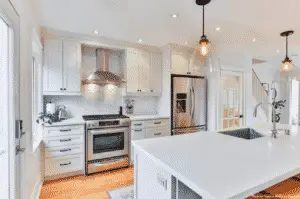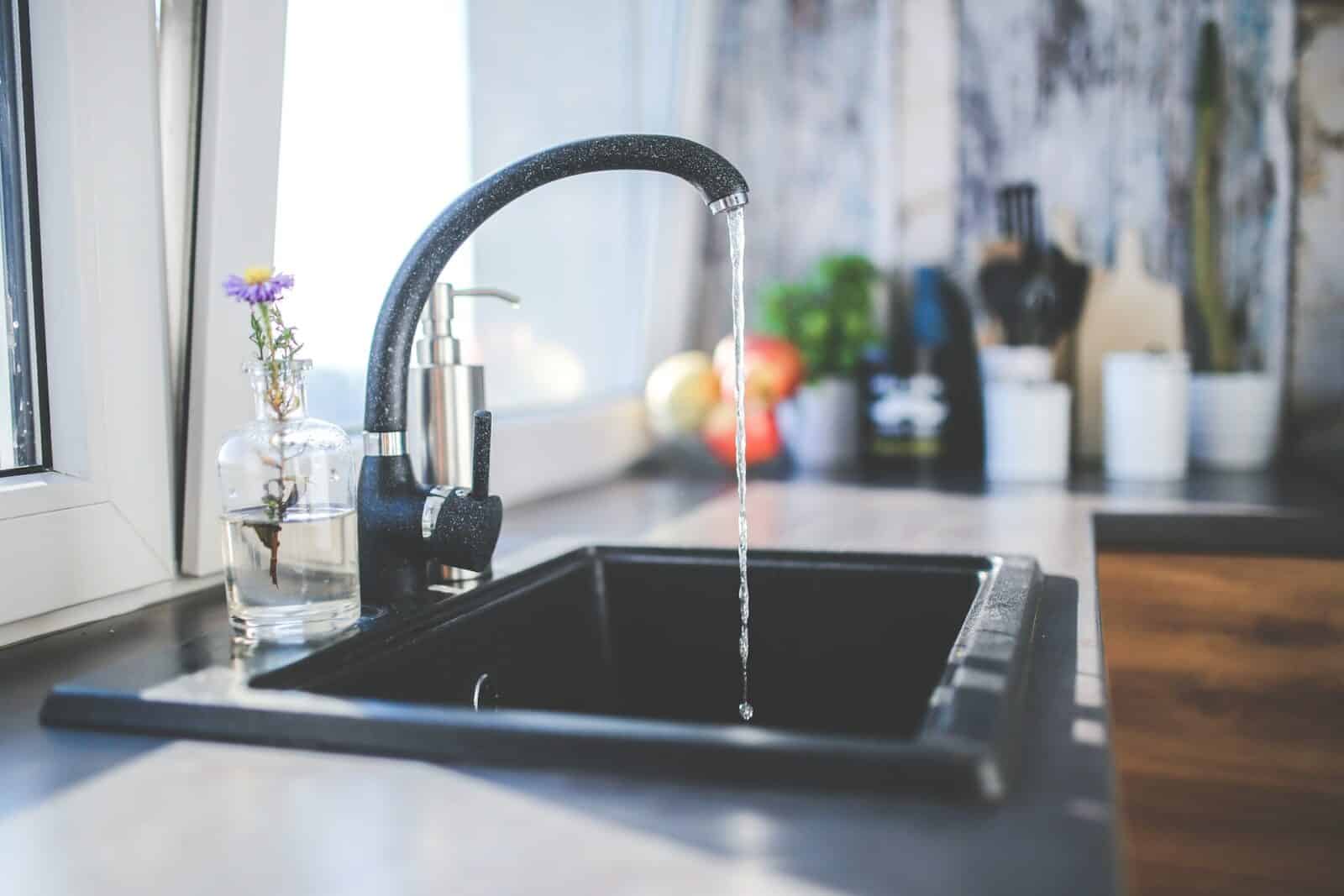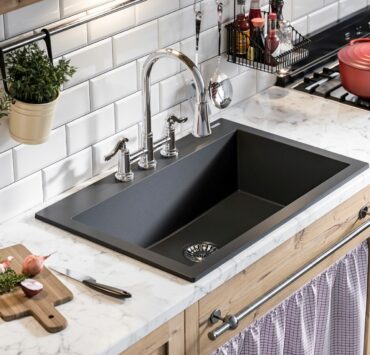Installing a kitchen sink drain can be a DIY project for homeowners who are comfortable with basic plumbing. Here is a step-by-step guide on how to install kitchen sink drain.
[ez-toc]Signs You Need A New Sink Drain
Firstly, kitchen sink drain installation usually goes hand-in-hand when you’re installing a new sink. This ensures that all parts fit together. For instances that you’re not replacing your entire kitchen sink, keep an eye out for these signs that a new sink drain is needed.
One indication is a clogged drain. If your kitchen sink drain is frequently clogged or slow to drain, it may be time to replace it. A clogged drain can be caused by a variety of factors, such as a buildup of food particles and grease. You can opt to unclog the drain. However, for stubborn build up that can’t be removed, it’s best to replace the drain altogether.
Another sign that you may need to replace your kitchen sink drain is when there’s uncontrollable leaking. If you notice that your kitchen sink is leaking, it could be due to a damaged or worn-out drain. Fix this ASAP as a leaky drain can cause water damage and increase your water bill.
In general, if your drain is old, not functioning properly, or you simply want to replace it with a new drain, these are all valid reasons to install a new kitchen sink drain.
Before You Start
Before installing a new kitchen sink drain, make sure that your kitchen drain kit is compatible with all the plumbing. You need to get a drain kit that will fit a single-basin or double-basin sink accordingly. If your sink has a garbage disposal, there are kitchen sink drains tailored to this as well.
To make the installation successful, select the correct size of kitchen drain. If you do make a mistake though, there are adapter fittings to troubleshoot any issues.
How To Install Kitchen Sink Drain
Gather the necessary tools and materials
Assuming that you’re installing a new kitchen sink drain due to having a new sink, have the following tools and materials ready to make the process as efficient as possible:
- Tape measure
- Marker
- PVC tubing cutter or hacksaw
- Channel-type pliers
- Kitchen drain trap kit
- Sink drain and strainer assembly
- Microfiber cloth and dish soap for cleaning
Turn off the water supply
Before you start working on the drain, make sure to turn off the water supply to the sink. This will prevent any accidental water spills or leaks.
Make sure everything fits
Before installing a new kitchen sink, check the height of the trap arm on the old sink. This is the horizontal piece between the U-shaped trap bend and the branch drainpipe in the wall.
To check the height, measure from the floor or base of the cabinet to the center of the trap arm. If the existing drain outlet can’t accommodate the depth of the new sink, make the necessary height adjustments.
Test-fit all parts of the drain and leave the fittings loose for adjustment before permanently securing them. Once the old sink has been removed and the new sink has been installed in the countertop, you can now install the drain.
Install all sink hardware
To begin, install the garbage disposal on the desired side of the sink, as this will take up the most space. Afterwards, install a basket strainer on the remaining sink basin. This is also a good opportunity to install any other under-sink components, such as a water filter or hot water dispenser. Keep in mind that you will need to work around these fittings as you connect the drain pipes.
Install the drain tailpiece and waste pipe
The drain tailpiece is a short vertical pipe that connects the sink strainer to a tee fitting. The side outlet of the tee fitting will accept the continuous waste pipe coming from the garbage disposal or the other sink basin. The bottom outlet will continue on to the drain trap.
To install the drain tailpiece and continuous waste pipe, temporarily attach the tailpiece to the sink strainer using a slip nut and washer. Then, temporarily connect the curved end of the continuous waste pipe to the garbage disposal’s drain outlet using a slip nut and washer.
Allow the straight end of the pipe to extend past the vertical tailpiece on the sink basin towards the tailpiece.
Hold the tee fitting up to the tailpiece and waste pipe and mark where they will fit into the fitting. Cut the tailpiece and continuous waste pipe to the proper length using a PVC tubing cutter or a hacksaw.
Reinstall the tailpiece, continuous waste pipe, and tee fitting, leaving the connections hand-tight. Adjust the pieces as needed and tighten the slip nuts.
Connect the drain trap
The drain trap assembly consists of a U-shaped trap bend and a J-shaped trap arm. The trap bend is installed onto the bottom of the tee fitting on the tailpiece, while the trap arm extends into the drain outlet in the wall.
To connect the drain trap, assemble the trap bend and trap arm together loosely with a slip nut and washer. Slide a slip nut and washer onto the straight end of the trap arm. Then, push the trap bend into the tee fitting on the tailpiece and slide the trap arm into the drain outlet in the wall.
Adjust the trap pieces as needed to create a direct path from the sink to the drain outlet.
Tighten all slip nuts with channel-type pliers, being careful not to over tighten them. Before continuing, confirm that the continuous waste pipe and the trap arm both have a slight downward slope in the direction of water flow and check all of the drain connections to ensure that they are tightened properly.
Test the drain
To complete the installation, turn on the water and test your drain for leaks. Tighten any connections that leak. Then, fill your sink basin and quickly drain it. Again, check for leaks and tighten accordingly.
When the water runs down your drainpipe smoothly, your work is done!
If you are looking for answers to how to install kitchen sink drain, it is a doable process as long as you have the right tools and materials. With the right preparation and a little know-how on navigating your sink’s components, you can easily replace your kitchen sink drain.
Related posts:
 Your Guide to the Best DIY Budget Kitchen Remodel Ideas
Your Guide to the Best DIY Budget Kitchen Remodel Ideas
 Outdated Kitchen Trends that You Must Stay Away From in 2022
Outdated Kitchen Trends that You Must Stay Away From in 2022
 Can You Paint Tile Backsplash?
Can You Paint Tile Backsplash?
 Small Space, Big Style: A Guide to Mobile Home Kitchen Remodel
Small Space, Big Style: A Guide to Mobile Home Kitchen Remodel
 How Tall is a Kitchen Island? And Many More Frequently Asked Questions around Islands Answered by Experts
How Tall is a Kitchen Island? And Many More Frequently Asked Questions around Islands Answered by Experts



